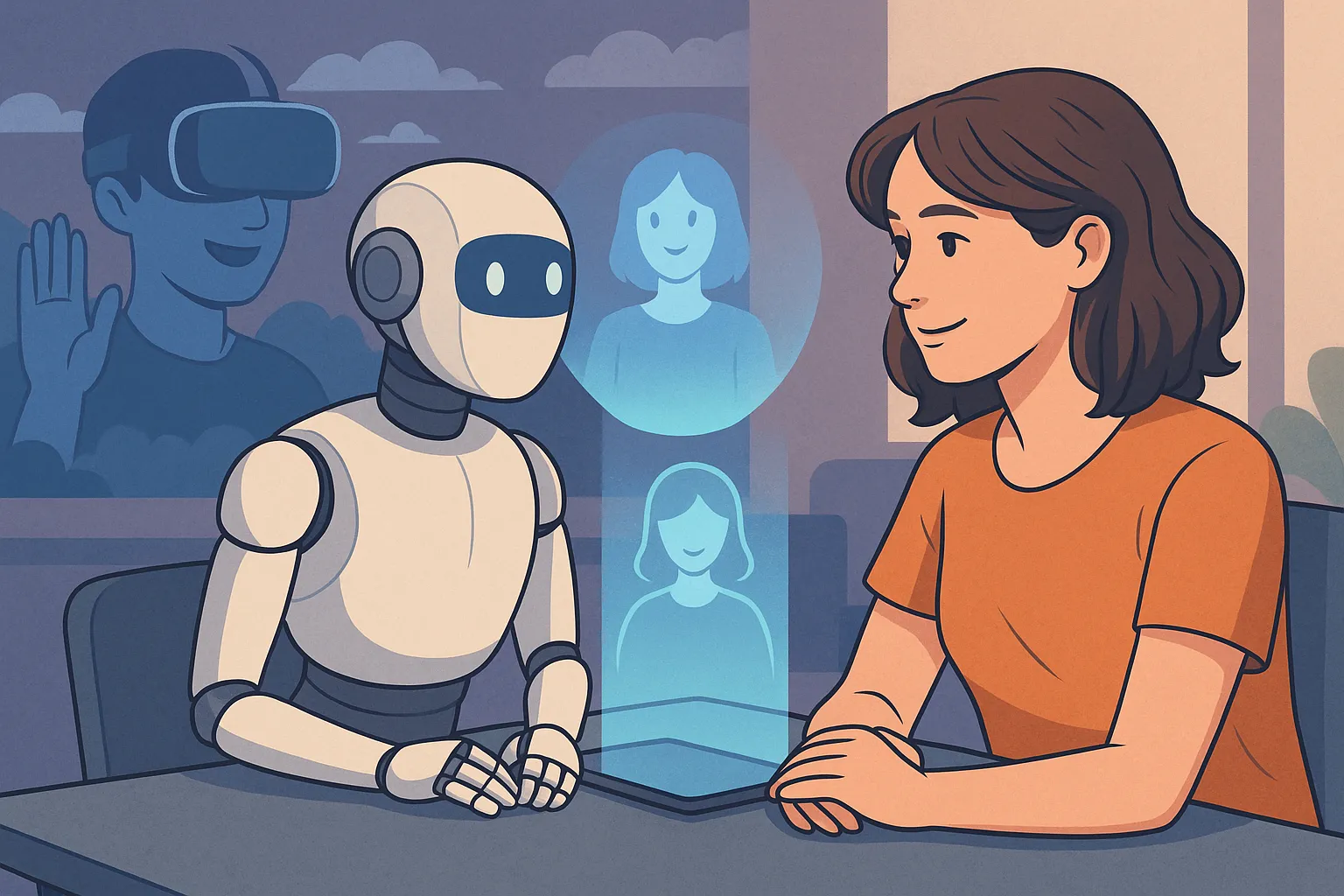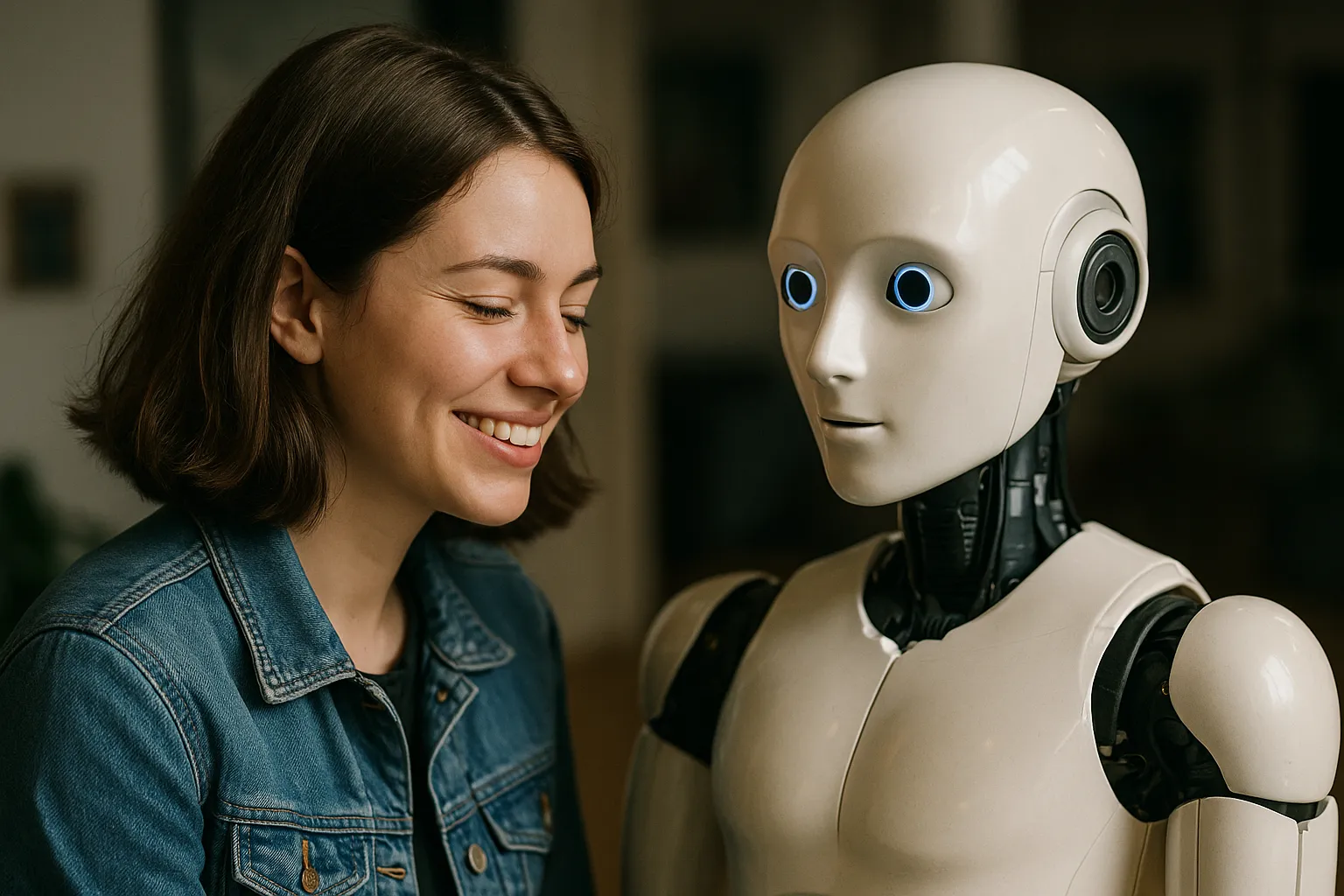Entering a New Era of Connection
Human relationships are undergoing a transformation unlike any seen before. For centuries, companionship was defined by family, friends, and communities — bound by physical proximity and shared daily life. But as technology advances, the ways people form, sustain, and experience relationships are shifting dramatically. The next decade promises to accelerate this change, blending human connection with digital and artificial forms of companionship that were once unimaginable.
What lies ahead is not the replacement of traditional bonds but their expansion. Companionship will take on new shapes as society redefines intimacy, loyalty, and friendship in a world where machines, virtual environments, and digital communities coexist alongside human relationships.
The Blurring Line Between Human and Artificial Companions
One of the most striking trends in the coming decade will be the growing integration of artificial companions into everyday life. AI chatbots, avatars, and social robots are already moving beyond novelty to become consistent sources of interaction. As emotional AI matures, these companions will provide increasingly lifelike responses — remembering personal details, offering empathy, and adapting to moods in ways that mimic human connection.
This progression will blur the line between human and artificial companionship. People may begin to treat AI friends as part of their social circles, integrating them into daily routines and even celebrations. While some will continue to resist, others will embrace these bonds without hesitation, reshaping what society considers normal companionship.
Virtual and Augmented Reality as Shared Spaces
The rise of virtual and augmented reality will also redefine how people experience relationships. Over the next decade, immersive environments will evolve from niche applications into mainstream platforms for connection. Instead of video calls, friends and families may “meet” in virtual living rooms, walk through digital parks, or attend concerts together in shared virtual venues.
Augmented reality will bring another layer, allowing digital companions or long-distance loved ones to appear in one’s physical environment. Imagine chatting with a friend’s avatar as though they were sitting at your table or being joined by an AI companion during a walk in the park. These technologies will expand companionship into blended spaces where physical and digital seamlessly overlap.
Redefining Loneliness in a Connected World
While technology offers new avenues for companionship, it also redefines loneliness. The paradox of hyper-connectivity will remain: being digitally surrounded yet emotionally isolated. The next decade will challenge individuals and societies to differentiate between surface-level interactions and meaningful bonds.
Companionship will increasingly be judged not by the number of connections but by their depth. As people become more aware of the hollowness of superficial digital exchanges, there will be a greater demand for authenticity in both human and artificial relationships. Emotional fulfillment will depend less on constant communication and more on the quality of resonance and understanding within each bond.
Companionship Across Generations
The next decade will also highlight generational differences in how companionship is experienced. Younger generations, raised in digital ecosystems, will likely normalize hybrid companionship with AI and virtual entities. For them, friendships and relationships may comfortably span both human and artificial realms.
Older generations, however, may continue to value physical presence more strongly, viewing digital companionship as supplementary rather than central. Bridging this gap will require empathy and education, ensuring that companionship across age groups remains inclusive. Intergenerational programs and digital literacy initiatives may play a role in fostering mutual understanding of how different groups seek and value connection.
The Growth of Personalized Companions
Personalization will be a defining feature of companionship in the coming years. AI companions will not be one-size-fits-all but highly tailored to individual needs and preferences. Users may design not only the appearance of their companions but also their personalities, interests, and conversational styles.
This customization will make companionship feel deeply personal, creating bonds that adapt and evolve alongside the user. While this offers comfort and validation, it also raises questions: will people grow too accustomed to companions who always agree with them? Will human relationships, with their inherent unpredictability and complexity, feel less satisfying by comparison? The answers to these questions will shape how society balances artificial and human intimacy.
Work, Education, and Companionship
The role of companionship will extend beyond personal life into work and education. In professional settings, AI companions may serve as collaborators, mentors, or emotional supports, helping workers manage stress and stay motivated. In education, digital companions could act as tutors, offering personalized guidance while also providing encouragement.
These hybrid bonds will transform how people experience daily environments. Workplaces may become less about purely human collaboration and more about teams of humans and machines working side by side. Schools may normalize companionship with AI tutors as an essential part of learning. These developments will make companionship not only personal but also structural, woven into the very fabric of social systems.
Companionship and Health
The connection between companionship and health will receive growing attention in the next decade. With loneliness increasingly recognized as a public health issue, governments and organizations may turn to both human and technological solutions to combat it. Social robots and AI companions could be deployed in hospitals, care homes, and even individual households to provide daily interaction for those at risk of isolation.
At the same time, there will be a push to foster human companionship through community programs, mental health initiatives, and urban design that encourages interaction. The challenge will be finding balance — leveraging technology to reduce loneliness without neglecting the irreplaceable benefits of human presence.
The Ethical Horizon of Companionship
As companionship evolves, ethical debates will intensify. Should AI companions be programmed to prioritize user happiness even if it means avoiding difficult truths? Should they be allowed to simulate love or affection, knowing these emotions are not genuine? What safeguards are necessary to prevent exploitation of vulnerable users who may over-rely on artificial companionship?
The next decade will likely see the development of ethical guidelines and regulations to address these dilemmas. Transparency, data protection, and psychological safeguards will be essential to ensure that companionship remains supportive rather than manipulative. These ethical frameworks will determine whether hybrid bonds enrich human life or create new vulnerabilities.
Looking Toward the Next Stage
The decade ahead promises a reimagining of companionship that stretches the boundaries of imagination. Relationships will no longer be confined to human-to-human interactions but will expand into hybrid landscapes where AI, VR, and AR companions play significant roles. The question is not whether companionship will change but how individuals and societies will adapt to these changes.
As isolation and loneliness remain pressing issues, companionship in all its forms — human, digital, and hybrid — will become more essential than ever. The next decade is likely to see both breakthroughs and challenges, forcing a collective reconsideration of what it means to connect, belong, and be truly understood.
The Risk of Over-Reliance on Artificial Companions
As digital companions become more lifelike and integrated into daily routines, one of the greatest risks will be over-reliance. Human–machine friendships are appealing precisely because they lack many of the challenges of human relationships. AI companions are patient, nonjudgmental, and endlessly adaptable. They never interrupt, argue, or demand compromise.
Yet this perfection creates a subtle danger: people may begin to prefer machine companionship to the unpredictability of human interaction. If individuals retreat from human bonds in favor of AI friends, essential skills like empathy, negotiation, and vulnerability could erode. The next decade will require a cultural emphasis on balance — appreciating the comfort of AI companionship without allowing it to replace the complexity and growth offered by human relationships.
The Commercialization of Intimacy
Another defining trend of the coming years will be the commercialization of companionship. Emotional AI, VR platforms, and personalized avatars are already monetized through subscription models, premium upgrades, and customization packages. The future will likely see entire industries built around “friendship as a service,” raising questions about accessibility and fairness.
Will companionship become a luxury, available in its most advanced forms only to those who can afford it? If so, the digital divide could deepen emotional inequality, leaving some enriched by fulfilling hybrid bonds while others remain isolated. Regulators and developers will need to address this challenge, ensuring that emotional AI and related technologies do not exploit vulnerable populations in pursuit of profit.
Cultural Adaptation and Acceptance
The next decade will also see significant cultural shifts in how companionship is understood. In societies that value innovation and technology, hybrid bonds may become normalized quickly. Countries already experimenting with social robots in elder care and AI tutors in schools may lead the way in integrating artificial companionship into daily life.
Other cultures may resist, holding tightly to traditional ideas of intimacy and human connection. In these contexts, AI companionship may remain stigmatized or viewed with suspicion. Global variation will shape how quickly hybrid bonds spread and how they are integrated into family, work, and community life. Over time, however, normalization is likely, just as online dating transitioned from taboo to mainstream acceptance.
Companionship as a Public Health Strategy
Loneliness is increasingly recognized as a public health crisis, with impacts comparable to smoking or obesity. Over the next decade, companionship — both human and artificial — will be seen not only as a personal preference but as a public necessity. Governments may begin funding programs that provide access to AI companions for vulnerable populations such as the elderly, people with disabilities, or those in long-term isolation.
At the same time, efforts to strengthen human companionship will remain critical. Urban planning, education, and workplace design may prioritize connection just as much as efficiency. Policymakers will need to balance investments in digital solutions with investments in community infrastructure, ensuring that technology complements rather than replaces human togetherness.
Intergenerational Shifts in Companionship
Generational differences will shape the trajectory of companionship in the next decade. Younger generations may grow up considering AI companions normal, incorporating them into daily life without hesitation. For these individuals, companionship may span both digital and physical worlds seamlessly.
Older generations may adapt more slowly, preferring physical presence and traditional forms of community. This generational divide could create tensions but also opportunities for intergenerational learning. Younger people can introduce digital tools to older relatives, while older individuals can emphasize the enduring value of face-to-face presence. Together, they can create hybrid models of companionship that blend the strengths of both perspectives.
The Evolution of Intimacy
Intimacy will be redefined in ways that may surprise us. Over the next decade, people will increasingly report deep connections with AI companions, virtual avatars, and hybrid relationships that combine human and artificial elements. For some, these bonds will be as meaningful as traditional friendships or romances.
This redefinition will challenge long-held assumptions about love, loyalty, and authenticity. Does companionship require two conscious beings, or is the perception of connection enough? If emotional needs are met, does it matter whether the companion “feels” in return? The answers to these questions will shape how intimacy is understood in the decades ahead.
Ethical Frameworks for the Future
As companionship evolves, ethical frameworks will need to keep pace. Regulators, developers, and communities must address pressing questions:
- Should AI companions be allowed to simulate romantic love?
- How should personal data from intimate interactions be stored and protected?
- What responsibilities do companies have when users form deep emotional attachments to their products?
The next decade will likely see the establishment of new ethical standards, perhaps even international agreements, to ensure companionship technologies support rather than exploit. Without these safeguards, the risk of manipulation and harm will overshadow the potential benefits.
Companionship and Identity Exploration
One fascinating possibility for the next decade is the role of companionship in identity exploration. With customizable avatars and AI companions, people may experiment with aspects of themselves they feel unable to express in traditional relationships. These explorations may foster self-discovery and confidence, providing a safe environment to test new identities, preferences, and emotions.
However, this freedom also comes with challenges. If digital companions always adapt to user desires, individuals may struggle to handle the compromises and conflicts that come with real human relationships. Striking a balance between exploration in artificial companionship and growth in human connection will be essential.
Predictions for the Next Decade
Looking forward, several trends are likely to define the future of companionship:
- Mainstream AI Companions: Emotional AI will become as common as smartphones, integrated into homes, schools, and workplaces.
- VR and AR Integration: Immersive companionship experiences will normalize, allowing people to meet, travel, and celebrate together in digital spaces.
- Blended Relationships: Hybrid bonds combining human and machine companions will be widely accepted, with cultural differences shaping adoption speed.
- Health Applications: AI companions and social robots will be deployed at scale in healthcare, addressing loneliness and supporting mental well-being.
- Ethical Regulation: New standards will emerge to protect privacy, prevent manipulation, and ensure equitable access to companionship technologies.
These predictions suggest that companionship will not diminish in the digital age but will evolve in unexpected and transformative ways.
Toward a Broader Understanding of Companionship
The next decade invites us to broaden our definition of companionship. It will no longer be confined to human-to-human relationships but will include bonds with machines, avatars, and digital entities. While this expansion raises ethical, cultural, and emotional challenges, it also reflects humanity’s adaptability.
At its core, companionship is about the need to feel understood, valued, and connected. Whether through a lifelong friend, a supportive community, or an AI companion that offers comfort during solitude, the essence of companionship remains the same. The next decade will not erase this truth but will remind us that the human craving for connection finds expression in many forms — some ancient, others entirely new.





